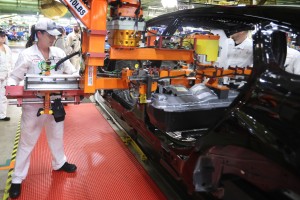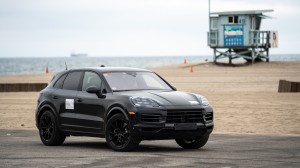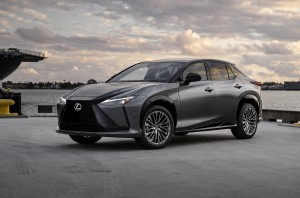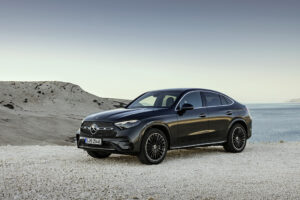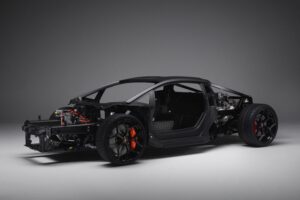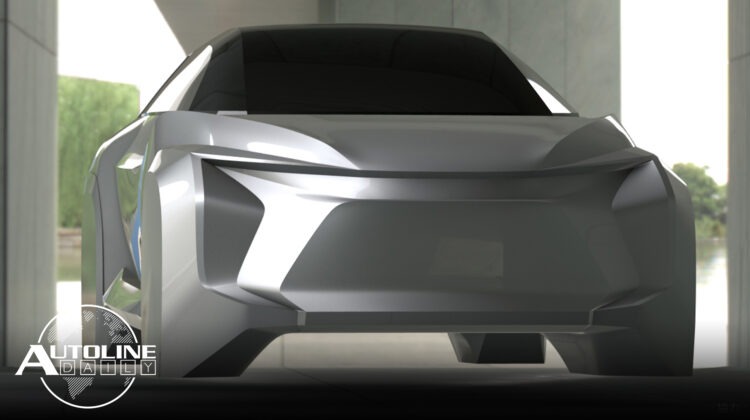
Listen to “AD #3525 – VW Announces 1st Non-EU Battery Plant; Toyota’s Next EV Coming in 2025; Lambo’s 1st PHEV is Carbon Heavy” on Spreaker.
Follow us on social media:
Runtime: 10:49
0:00 VW Announces 1st Non-EU Battery Plant
0:56 VW Improves Its BEV Sales
1:51 Honda Prepares Production for EVs
3:26 Porsche Plans Wave of EVs
4:32 Lexus’ 1st EV Priced at $60K
5:44 Toyota’s Next EV Coming in 2025
7:49 New Mercedes GLC Coupe Grows Up
9:09 Lambo’s 1st PHEV Goes Carbon Heavy
Visit our sponsors to thank them for their support of Autoline Daily: Bridgestone, Intrepid Control Systems, and Schaeffler.
This is Autoline Daily, the show dedicated to enthusiasts of the global automotive industry.
VW ANNOUNCES 1st NON-EU BATTERY PLANT
Volkswagen continues to grow its EV presence in North America. Last week, the company announced plans to build a plant in South Carolina that will produce electric pickups and SUVs for the Scout brand. And now the automaker has finally chosen a site to open a battery factory in North America, in St. Thomas, Ontario, its first battery plant outside of Europe. VW did not reveal how much it’s investing in the plant or what its capacity will be but it plans to start battery cell production in 2027. However, that means, unless the rules change, it will still be several years before its EVs qualify for the full U.S. EV tax credit. And more Scout news coming up later in the show, so stay tuned.

And VW continues to make progress selling BEVs. The Group sold more than 572,000 last year, a 26% gain. And BEVs accounted for 7% of its overall sales. The VW Group is the BEV market leader in Europe, and BEV deliveries in China and the U.S. were up 68% and 18%, respectively. And to keep the momentum going, VW will invest 180 billion euros or more than $190 billion, between now and 2027, to grow in North America, increase competitiveness in China and develop its product portfolio. And more than two-thirds of that investment will go towards digital tech and electrification.
HONDA STARTS PREPARING PRODUCTION FOR EVs
Last year, Honda announced it’s investing $700 million to retool its plants in the U.S. to prepare for EV production in 2026. Here’s some more details about the transition. It will consolidate two lines at its Marysville, Ohio plant that currently build ICE vehicles and hybrids, into one. And it will start training workers later this year on the production of EVs. It will transfer Accord production from Marysville to its plant in Indiana in 2025, to make room for building those EVs. Honda will dedicate one line at its transmission plant in Georgia to the production of e-axles. And lastly, it will shift some engine component production from its Anna Engine Plant in Ohio to its engine plant in Alabama. This will allow the Anna plant to prepare for production of EV battery cases.
PORSCHE PLANS NEW WAVE OF EVs
Porsche officially confirmed its working on an all-electric version of the Cayenne. The automaker didn’t reveal any specifications or when it will debut but Wards reports that it will likely launch in Europe in 2026, with sales in North America beginning the following year. This year, a new version of the SUV is being introduced that’s built on a new chassis and is offered with three upgraded plug-in hybrids with longer range. Porsche also shared some of its other EV plans. The electric version of the Macan will be available next year and the electric Boxster and Cayman will debut in the middle of the decade. It’s also planning to introduce an all-electric SUV positioned above the Cayenne. Porsche didn’t share many details but it will be built on the automaker’s SSP Sport platform and that it will have “strong performance and automated driving functions…along with a completely new experience inside the vehicle.” (New Porsche Cayenne Pictured)
LEXUS’ 1st EV PRICED AT $60K
Lexus’ first all-electric model, the RZ 450e, is now on sale in the U.S…but only in limited quantities. The RZ shares a platform with the Toyota bZ4x and the Subaru Solterra and like those models it’s equipped with a 71.4-kWh battery that provides an EPA estimated 220 miles of range with 18-inch wheels. The optional 20-inch wheel drops that to 196 miles. The RZ features two electric motors, a 150-kW one at the front and an 80-kW one at the rear, which produce a total of 308 horsepower. As for the interior, its main highlights are a 14-inch touchscreen and an optional yoke-like steering wheel. At some point in the future it will be available with Steer-by-Wire, which means no mechanical linkage between the steering wheel and tires. The RZ has a starting price just under $60,000 including destination charges and the top trim starts just over $65,000.
TOYOTA’S NEXT EV COMING IN 2025
Speaking of Toyota and its bZ electric vehicles, AutoForecast Solutions has an interesting production update. It says in 2025 Toyota will start producing another electric crossover, the bZ5X, but instead of being built in Japan and China, like the 4X, the 5X will be made in the U.S. at Toyota’s Georgetown, Kentucky plant. That’s all the info on the Toyota we have, but AFS also has a number of other production updates. Nissan will start making the next-gen Rogue in 2026 in the U.S., South Korea and Japan and the next-gen Frontier pickup at its plant in Mississippi in 2027. Polestar is said to start production of the Polestar 3 in 2024 at Volvo’s U.S. plant in South Carolina, which is also where the Volvo EX90 will be built at the very end of this year. And perhaps the most interesting to us is Scout production news. VW’s all-new rugged EV brand is forecast to start production at its newly announced plant in South Carolina in November of 2026 with another vehicle to follow in May of 2027. If you had to venture a guess, which do you think will be first? The pickup or SUV? According to AutoForecast Solutions it’s the SUV.
NEW MERCEDES GLC COUPE GROWS UP
Mercedes pulled the wraps off the new GLC late last year and now it’s showing off the new Coupe version of the crossover. It has similar styling upgrades, which in the grand scheme of things are not that different, but overall the vehicle is longer, taller and has a wider wheel track. The interior is highlighted by a layered dashboard with a large smooth section that flows down into the center console. Roundish air vents sit proud from the dash and a pop of color comes from two big digital display screens. All versions of the GLC now come with some form of hybridized powertrain, but the type will depend on the market you’re buying in. In Europe it’s available with gas and diesel mild and plug-in hybrid setups, but North America only gets one mild hybrid setup that features a 2.0L 4-cylinder engine that generates 255 horsepower. There’s too many details about the powertrain to go into right now, but we would like to point out the plug-ins feature a rather large 31.2 kWh battery pack that returns up to 131 kilometers or over 80 miles of range. The new GLC arrives at dealerships later this year.
LAMBO’S 1st PHEV GOES CARBON HEAVY
Lambo’s 1st ever plug-in hybrid, codenamed the LB744, but likely a new version of the Aventador, launches in just a couple of weeks. It recently revealed its powertrain setup and now it’s giving us a look at the chassis. Here’s what we’ve got. The entire monocoque as well as the roof and front structure, for the first time, are made from 100% carbon fiber. The rear structure, which surrounds the engine and suspension, is made from aluminum and Lambo gives the entire package the awesome name of monofuselage. It says the monofuselage is 10% lighter and has 25% more torsional stiffness than the Aventador’s chassis. And the front structure alone is 20% lighter. We’re guessing it will reveal the interior next, before revealing the entire car, but we’ll be here for it all.
But that’s a wrap for today. Thanks for making Autoline a part of your day.
Thanks to our partner for embedding Autoline Daily on its website: WardsAuto.com
Seamus and Sean McElroy cover the latest news in the automotive industry for Autoline Daily.





